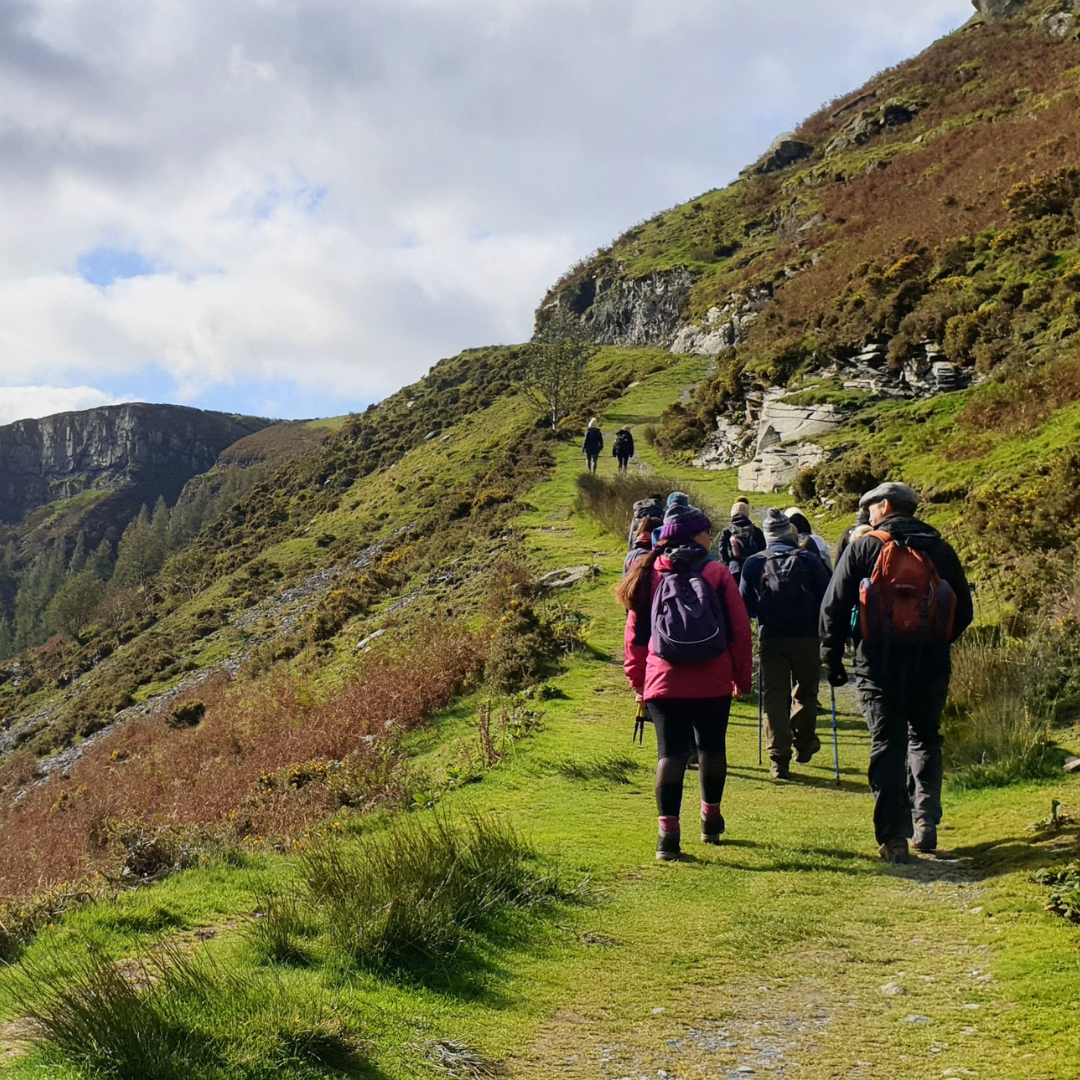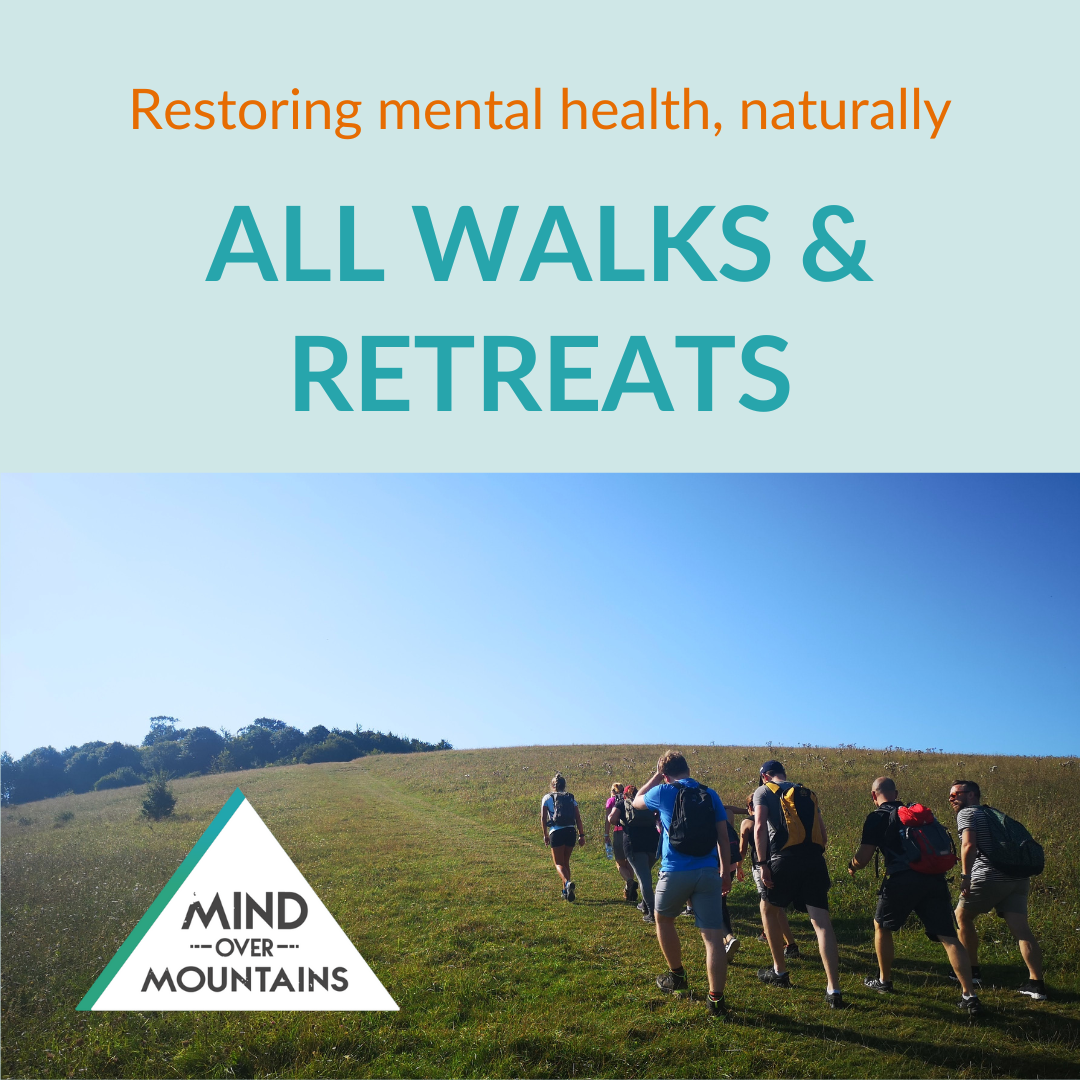
Here at Mind Over Mountains we’re huge advocates for getting outside and walking in nature. We know the benefits that this brings, and especially when combined with mindfulness. That said, we also know that not all of us are fortunate enough to live among mountains and hills, or even parks. But nature is all around us, even in urban spaces - you just need to know how to find it.
Read on to find out more about finding nature in urban spaces, and how you can make the most of green therapy every day, even if you’re miles from a forest or a field.
Why find nature in urban spaces?

City life tends to move at a faster pace, and this often goes hand in hand with increased stress and anxiety levels too. Studies such as this one carried out by Kings College London show that city living can increase your risk of developing anxiety by up to 20%, and depression by up to 40% - but why?
According to the Centre for Urban Design and Mental Health, the fast pace, high stimulus environments of cities has been shown to overload the brain, thus leading to high stress and inevitable symptoms of anxiety and low mood.
In contrast, more and more studies (like this one, from Stanford University) are supporting our own belief that exposure to natural environments can have the opposite effect. Just 15 minutes outside in nature can be enough to lower blood pressure and stress, ease anxiety and improve overall mood.
Urban nature - whether in parks, community gardens, or green rooftops - can help provide those living in cities accessible ways to improve their own mental health and connect with the calming benefits of the natural world. It might be more challenging to get outside into nature if you live in an urban space, but it’s not impossible - and the benefits are proven to be worth it. So, how can it be done?
Connecting with nature in an urban space
Nature is all around us, even if not at first glance. One of the easiest ways to connect with nature in an urban space is to open a window and simply breathe in some fresh air. But how easy is it to get outside and move, when you live in a city?
Find a park or city garden
City parks are a great place to start - almost every city has a dedicated green space where you can take a few moments to escape. Botanical gardens are also very common and relatively easy to find, and can be really great places to connect with nature.

Find your nearest park or green space and schedule a walk in - taking a walk through these well-tended spaces will allow you to unplug and reconnect, even if you are surrounded by buildings. Try finding out when these spaces are likely to be less crowded, so that you can spend some time strolling, walking, running or simply sitting and observing.
Seek out the urban wildlife
The diversity of wildlife in the city might surprise you - but we actually share much of our urban space with birds, squirrels, insects and foxes, and paying attention to this fact is another great way to reconnect with nature.
Maybe you can spend some time bird watching in the park, or perhaps you can get involved with a local wildlife preservation scheme to learn more about the creatures who live in the city.
Visit a rooftop garden
More and more cities are embracing sustainable design, and that means rooftop gardens and vertical green walls are becoming more common in our cities. And this is great, as they not only help reduce air pollution and support biodiversity, but they make cities look a whole lot nicer too!
Look up - lots of your closest apartment buildings or office blocks could be sporting a rooftop garden, and if you live or work in one such building, then why not take advantage? You could spend time up there simply sitting and breathing mindfully - and if that's not possible, you could always start your own small container garden on your balcony or windowsill. Either way, you’d be brining nature into your own personal space in the city!
Get involved in your local community garden
Community gardens are a great way to not only immerse yourself in nature, but to meet and connect with like minded people too. Have a look online to find your nearest initiative and get stuck in - getting your hands dirty will help you to connect with the earth, create a sense of community and nurture local ecosystems. Win win!
Don’t be put off if you don’t have experience of growing your own fruit and vegetables - lots of community gardens welcome newcomers who are interested in learning and contributing.
Spend time by water

Lots of cities are built around rivers, lakes or coastal areas - and these bodies of water can be havens for aquatic life, green spaces or nature trails. Walking along a riverbank or simply sitting by a lake can help to lower blood pressure and foster feelings of calm and relaxation - so if you’re able, spending time by water is a great way to unwind and let go of day to day stresses.
Tips for exploring urban nature
Sometimes, all you need is to tweak your routine. That might be walking or biking through different neighbourhoods, or it could be taking a detour through a green space into an area you don’t normally visit.
Here are some tips to get the most out of spending time in urban nature:
Use apps or maps
Lots of cities have hidden gems like small pocket parks or secret gardens that could be missed, so downloading an app like Go Jauntly or heading to Ordnance Survey’s Open Green Space database is a great idea. You can also add your postcode here and Fields in Trust will find your nearest green space for you.
Practise mindfulness
Mindfulness takes practice, and its not always easy to do when you’re in a busy place, even if you have found a green space in your city - but it is possible to practise mindfulness in urban nature settings. Slowing the mind in this way will definitely help to strengthen your connection to nature. Read our tips on mindfulness in nature here.
Nature is closer than you think
Sometimes, finding nature in urban spaces is more about shifting your perspective and opening up to discovering new spaces. Whether it’s a large public park, a small community garden, or simply a tree-lined street, nature is there, waiting for you to connect with it. And when you integrate these spaces into your daily routine, you’ll not only improve your mental and physical wellbeing, but you’ll rediscover the beauty of your city too. Nature is closer than you think—step outside, and you'll find it.









